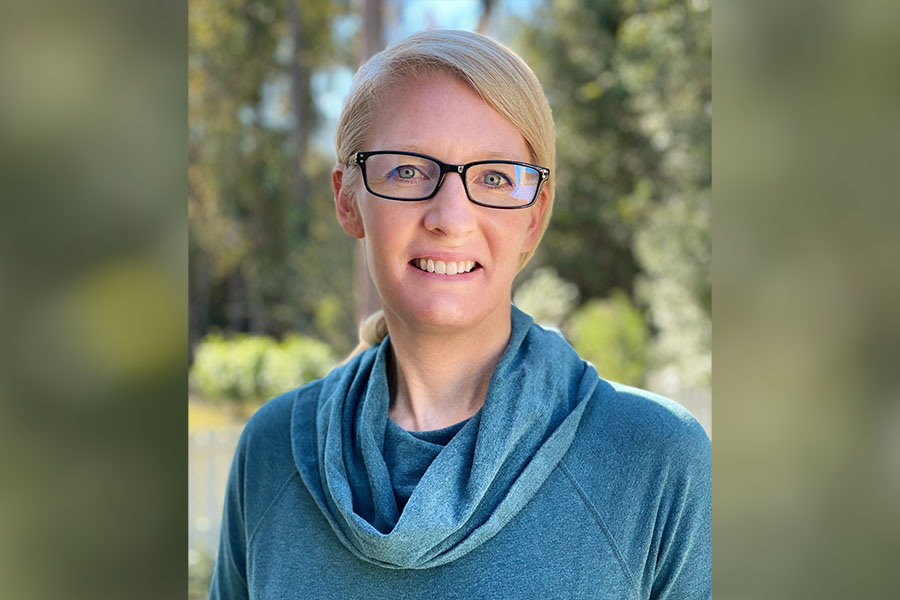FSU oceanographer earns grant to research nitrous oxide, climate change

A faculty member in the Florida State University Department of Earth, Ocean and Atmospheric Science will investigate the production of greenhouse gases in marine environments near the coast of Namibia, Africa, this year thanks to an award from the National Science Foundation.
Olivia Mason, associate professor of oceanography and environmental science in the College of Arts and Sciences, will use the $467,000 award from the NSF Division of Ocean Sciences, in collaboration with the University of Namibia and Stanford University, to examine the spatial distribution of nitrous oxide production rates in one of the world’s most productive marine ecosystems: the northern Benguela upwelling system. Nitrous oxide is a potent greenhouse gas that contributes to ozone destruction in the upper atmosphere.
“Eastern boundary upwelling ecosystems in both the Atlantic and Pacific Oceans support some of the highest rates of primary productivity in the world’s oceans. Of these ecosystems, the highest productivity is found in the northern Benguela upwelling system off the coast of Namibia, Africa,” Mason said. “This is the world’s most productive upwelling system, yet it is critically understudied.”
The northern Benguela upwelling system is a wind-driven system that replaces warm, nutrient-depleted water found at the ocean’s surface with dense, cooler, and nutrient-rich water from deeper in the ocean. These nutrients increase the biological productivity of the surface waters. Eventually, the bloom of primary producers becomes a carbon source for microorganisms, such as bacteria, that live in the water column. Microbial consumption of the decaying organic matter uses large amounts of oxygen, reducing dissolved oxygen concentrations in the water column.
Deoxygenation of the ocean is an expected consequence of climate change, and the expanse of dead zones, or regions with low to no dissolved oxygen concentrations, has doubled every decade for the past 60 years. Although marine environments low in dissolved oxygen occur in both the Atlantic and Pacific oceans, substantially less research has focused on the Eastern Tropical Atlantic where high nitrous oxide fluxes have been reported.
“Dead zones are both low in dissolved oxygen and enriched in the by-products of microbial metabolisms. These microbial pathways, or how microbes consume ‘food,’ also contribute significantly to the release of nitrous oxide,” Mason said. “The expanding dead zones are expected to be major contributors to global warming, and thus, there is an urgent need to quantify the contribution of marine ecosystems to nitrous oxide production.”
The spatial distribution of nitrous oxide production rates and mechanisms will be calculated in efforts to better predict future ocean emissions of nitrous oxide. Relationships between the dissolved oxygen concentrations and microbial community structure, microbial function, and metabolic activities that lead to nitrous oxide production will also be investigated through tracer experiments, isotope analyses and metagenome sequencing.
“Current uncertainties in nitrous oxide production mechanisms and controls, specifically in the northern Benguela upwelling system, point to a significant knowledge gap that creates instability in modeling future global climate scenarios,” Mason said. “For this project, we’re interested in microbial pathways that lead to nitrous oxide production either through denitrification, the process or reducing nitrate and nitrite to gaseous forms, or through ammonia oxidation.”
The spatial distribution of nitrous oxide production rates and mechanisms will be determined through tracer experiments and isotope and omics analyses, such as analyses of genomes. This research will allow for better predictions of future ocean emissions of nitrous oxide, helping to fill a critical knowledge gap.
While the pandemic has altered initial plans, Mason hopes to conduct research and take samples during the African Regional Graduate Network in Oceanography Discovery Camp in Namibia in May in collaboration with the University of Namibia. Mason, whose research also investigates salt marsh ecosystems, seagrass communities, pitcher plants, and the Deepwater Horizon oil spill, will use the award to support training of two graduate students, one from Florida State and one from the University of Namibia, and a postdoctoral researcher at Stanford University.
“Given that globally expanding low oxygen marine environments are an important source of nitrous oxide, the work that Dr. Mason will carry out to determine sources and production rates of this greenhouse gas is essential. Further, Dr. Mason’s and an FSU graduate student’s participation in the African Regional Graduate Network in Oceanography class and discovery camp provides an important opportunity for this project to have broader impacts,” said EOAS chair Vincent Salters.
Other contributors to this project include professor of Earth system science at Stanford University Karen Casciotti and the University of Namibia through the Discovery Camp.
